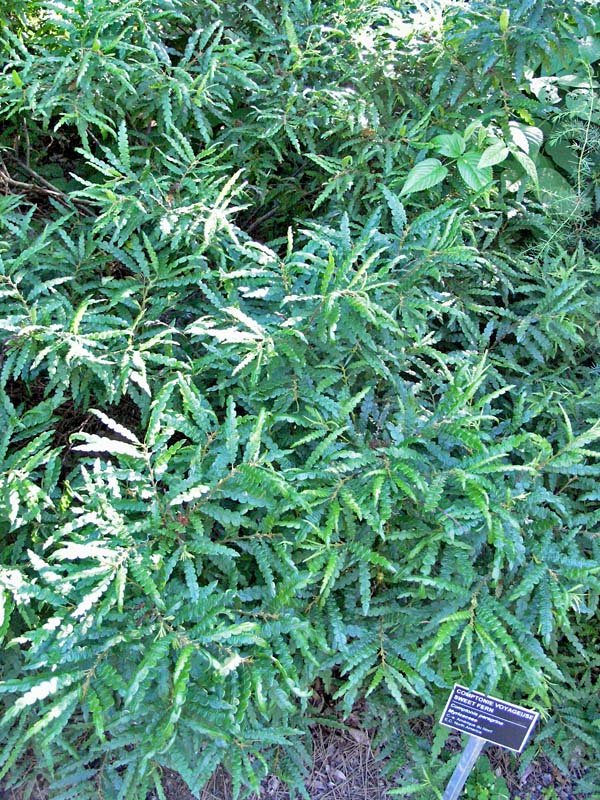| Landscape | Massing as a medium height ground cover. |
| Propagation | By division of clumps or seed. |
| Cultivation | Grow in well drained areas, once established it can tolerate very dry conditions. |
| Habitat | Often found in association with jack pine in light shade on sandy to gravelly soils, quite common in occurrence. |
| Leaf Description | Leaves are arranged alternately, on short 6 mm stalks, they are simple, and acutely tapered at the apex, 6-12 cm long and 0.5-1 cm wide. Leaves are dark green on the upper surface and pale below, hairy and with resin dots much resembling fern spores. The leaf margins are lobed while a pair of heart-shaped stipules is found at the leaf base. |
| Flower Description | The flowers are inconspicuous, male flowers are formed in 2.5 cm long, dry, scaly catkins clustered at the end of the branches. The female flowers are formed at the ends of short branches. |
| Fruit Description | Burr-like bristly catkins to 2. 5 cm long containing numerous smooth nutlets in June-July. |

